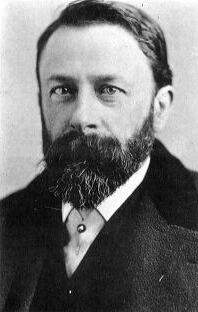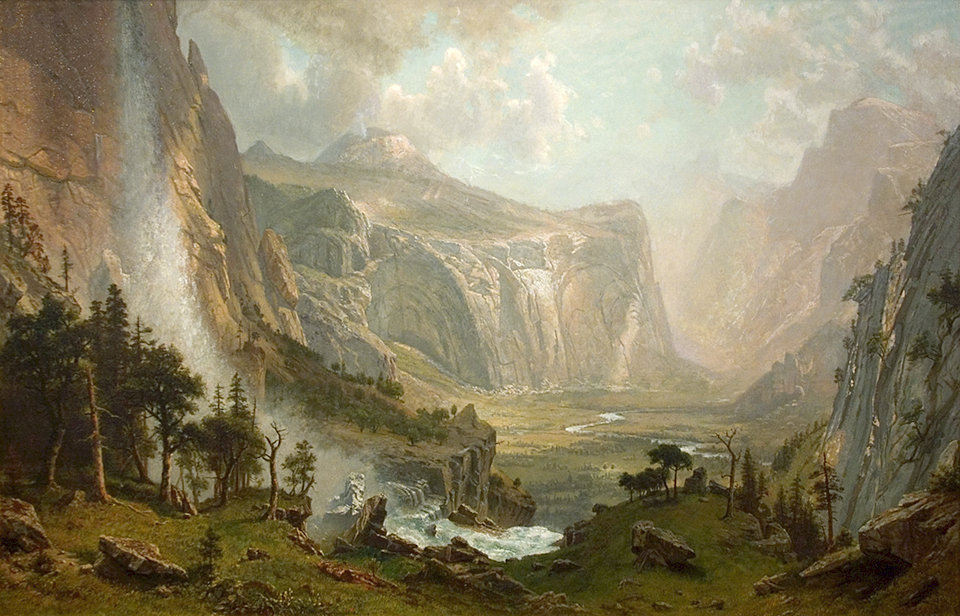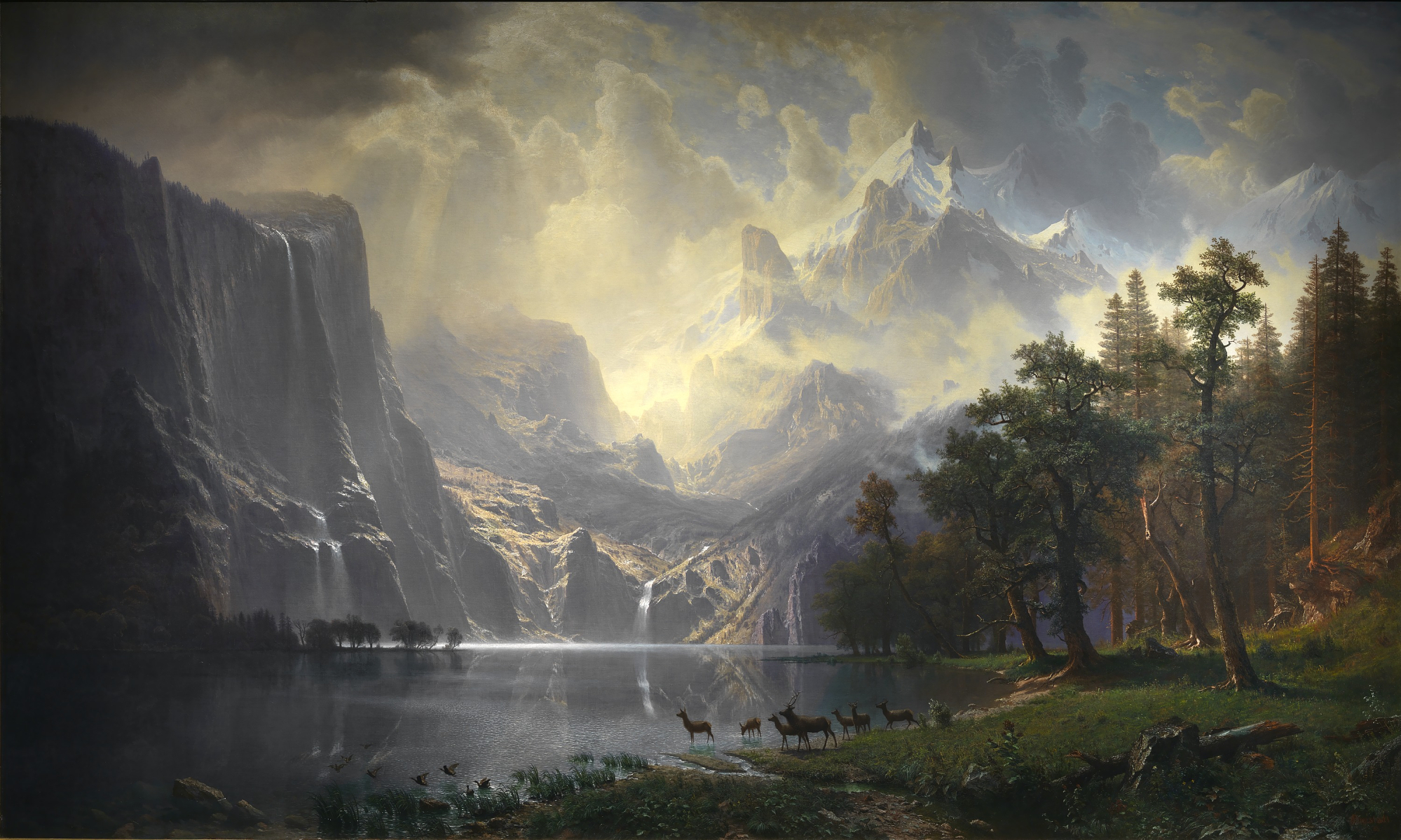Albert
Bierstadt was a German-American painter best known for his large landscape
paintings of the American West. He
was born in Solingen, Germany in 1830 and moved with his parents to
Massachusetts one year later. During
his childhood he developed a passion for art, which he carried with him for the
rest of his life. He experimented
with drawing and painting at a young age and eventually decided upon painting
as his full-time profession.
He
began training in Dusseldorf, Germany in his early twenties for a few
years. Upon returning to
America, he became a part of the Hudson River School of artists, well known for
their romantic paintings of the Hudson River Valley and surrounding New England
wilderness. There, Bierstadt
developed a taste for the unique, rugged American landscape, and this experience
prompted him to begin one of what would be many journeys west in 1859. Out west Bierstadt found the mountains
to be on a class of their own, comparable only, he would say, to the Bernese
Alps he’d witnessed in his travels through Europe, and even more majestic than
the beautiful Catskills and White Mountains of New England.
Bierstadt’s success grew as he brought back more and more paintings depicting the then “new” frontier. His art appealed to the vision American businessmen held of a “land of plenty”, areas seemingly unspoiled and teeming with game and gold. He also captured the vastness and wildness of a land that was foreign to many of those who lived east of the Mississippi, a land on the verge of extinction, in ways. In a letter he wrote in July of 1859, Bierstadt wrote, of the Native Americans, “now is the time to paint them, for they are rapidly passing away; and soon will be known only in history.” (Hendricks, 73) Bierstadt beheld the beauty that lay before him, and realized its days were numbered. So he painted it, capturing America’s fading frontier with masterful artistic skill, and thereby establishing himself as “America’s most celebrated landscapist” (Hendricks, 140).
The Rocky Mountains, Lander’s Peak is
perhaps “the chef d’oeuvre of Bierstadt’s early career” (Hendricks, 140). It was the product of one of Bierstadt’s
earliest visits to the Wind River Mountains of Wyoming, an area which he’d
paint several times again. One
notices the beautiful use of color and a carefully crafted foreground, mid-ground,
and background. It is a quintessential
portrait of the 19th century American West. The following is one critic’s flattering
opinion, taken from an 1864 showing at Sanity Fair’s Art Gallery:
Even dismissing the question
of inspiration, and looking at ‘Lander’s Peak’ from a purely technical point of
view, we are compelled to accord the picture a rank with the foremost
achievements in form and color. There are certain passages of it which
indicate an acquaintance with artistic means unsurpassed in any painting of our
age and country…The handling of these particulars is of a perfection which
would entitle Bierstadt to the name of a great workman, did he not deserve that
of a great artist more justly still…Its sunlight seems self supporting. It illumines a twilight room…these
facts are decisive of the artist’s place in the very first rank of American
genius.” (Hendricks, 147)
At this same Sanity Fair exhibit, which was lit
up at night time by nearly 500 gas jets, Bierstadt’s The Rocky Mountains competed with some of America’s finest works of
the 19th century, among them Church’s The Heart of the Andes and Leutze’s George Washington Crossing the Delaware. (Hendricks, 149) Nonetheless, Bierstadt’s masterpiece,
accompanied by artifacts Bierstadt had collected on his trips out west, as well
as a group of Native Americans, stole the spotlight; it was bought for $25,000,
making it at that moment the most expensive American painting that had been
sold to date. (Hendricks, 154)
The
Domes of the Yosemite 9.5’x15’. This painting was painted on commission for Legrand Lockwood
to be displayed in his Connecticut mansion. (Hendricks, 161) Throughout his career Bierstadt was
criticized on account of his training in Düsseldorf. Some scholars felt the German style was hard and unfeeling,
and made the German-American artist’s paintings ‘“beautiful” but ‘destitute of
sentiment’.” (Hendricks, 164) Perhaps this had more to do with critics’
feelings of patriotism in America’s artistic “coming of age” than anything,
however. To me, the feeling comes
through here and in all of Bierstadt’s paintings as powerfully as does the
scenery.
Bierstadt would paint his paintings based off of his own sketches he had drawn when in the field. Because of this, some of his paintings are less perfect depictions of exact locations and more a blending of features from different landscapes and from his own imagination. Still, many of his paintings managed to synthesize his sketches quite accurately and at times even “achieved a transcendent statement of the fresh wilderness.” (Hendricks, 9)
Sources
Hendricks, Gordon. Albert Bierstadt: Painter
of the American West. New York: H. N. Abrams, 1974. Print.
"Albert Bierstadt." Wikipedia.
Wikimedia Foundation, 20 Feb. 2014. Web. 28 Feb. 2014. <http://en.wikipedia.org/wiki/Albert_Bierstadt
"Hudson River School." Wikipedia.
Wikimedia Foundation, 25 Feb. 2014. Web. 2 Mar. 2014.
<http://en.wikipedia.org/wiki/Hudson_River_School
Wikipedia Image
Bartfield.com
Google Image




These are just incredible
ReplyDelete